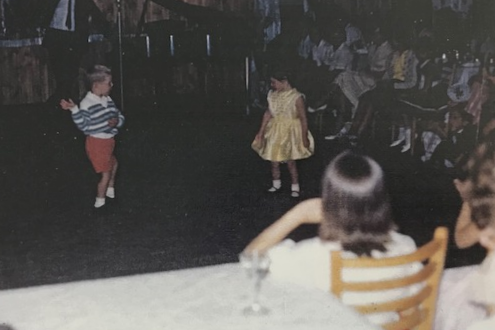
Children dancing in the Casino around 1963.
Peter Ballantyne forwarded this photo of him dancing in the Casino around 1963.

News & Opinion About Huletts Landing, N.Y.

Children dancing in the Casino around 1963.
Peter Ballantyne forwarded this photo of him dancing in the Casino around 1963.

“The Angel is Opening Christ’s Tomb” by Benjamin Gerritsz Cuyp, c. 1640. On display at the Museum of Fine Arts in Budapest.
There is an old Irish folk story that puts forward that on Easter morning the rising Sun literally dances in the sky with joy at the risen Christ.
I wish everyone peace and joy this Easter and throughout the year!
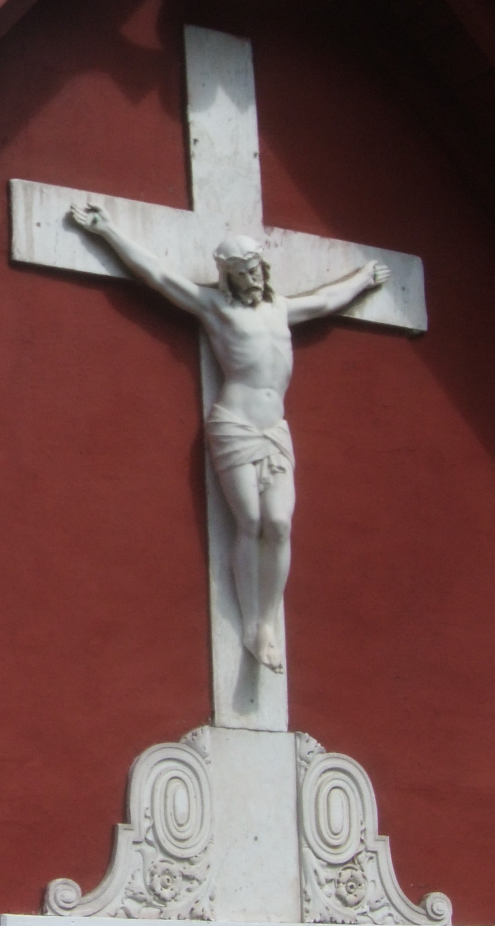
Crucifix on the side of the exterior of the Chapel on the Paulist Father’s Harbor Islands opposite the south end of Huletts Landing.
Today we observe Good Friday, the day of the death of Jesus. Many Christian Churches have different ways of observation, to prepare us for the coming resurrection of the Lord on Easter Sunday.
“Row out into the deep. When the storms come, try to remember that He who calms the storm is always in the boat with you.”
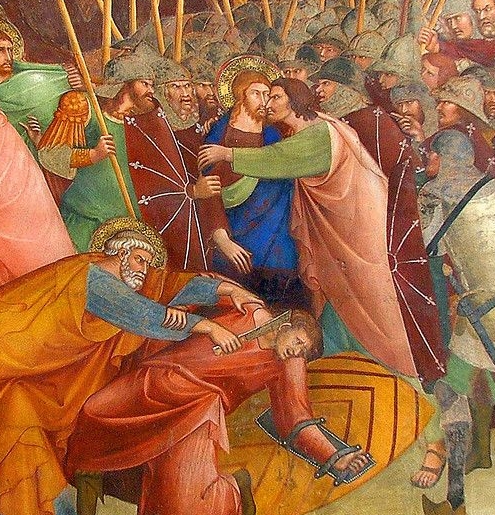
“Kiss of Judas” attributed to Lippo Memmi circa 1340
Collegiata of San Gimignano, Italy
The kiss of Judas (known in art) as the Betrayal of Christ, is how Judas Iscariot identified Jesus to the multitude with swords and clubs who had come from the chief priests and elders of the people to arrest him, according to the Synoptic Gospels. It happens in the Garden of Gethsemane after the Last Supper and leads directly to the arrest of Jesus.
“The innkeeper at whose place I had my meals informed me that one of his lodgers was an American general. Thereupon I expressed the desire of seeing that gentleman, and, shortly after, I was introduced to him. After the usual exchange of greetings … I ventured to request from him some letters of introduction to his friends in America. “No,” he replied, and after a few moments of silence, noticing my surprise, he added, “I am perhaps the only American who cannot give you letters for his own country … all the relations I had there are now broken … I must never return to the States.” He dared not tell me his name. It was General (Benedict) Arnold.”
French statesman Talleyrand described meeting Benedict Arnold in Falmouth, Cornwall, England in 1794

Tom Keating, the curator of the Huletts Gallery, is seeking artists who would like to exhibit their work during the coming summer. If interested please send samples of your work to tomkeating123@gmail.com. Thank you for your interest.
Also, “FHHL is looking for a volunteer to continue Marian Knight’s work on the Oral History project. The most important part of this is to manage the pieces, interviews and photographs transcriptions, publication in 3-ring notebook and Website, preparation for eventual Huletts Oral History book. The person does not have to do everything, but needs to find volunteers to help with the various tasks and see that they get done. Contact Marian Knight (marianknight67@gmail.com) or Jim McMaster (jimmcmaster@msn.com) if you are interested.”
Thanks in advance for your help!
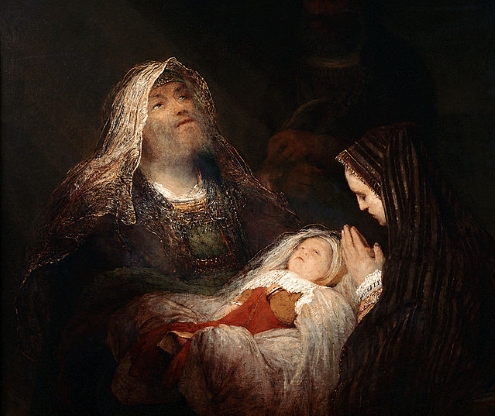
Simeon’s Song of Praise, by Dutch painter Aert de Gelder (1645-1727), from about 1700-1710. In the painting, Simeon sees Jesus and raises his eyes to heaven to exclaim, “Now thou dost dismiss thy servant, O’Lord, because my eyes have seen Thy salvation.”
The Feast of the Presentation of Jesus at the Temple which the Church celebrates today, is celebrated by the Church of England either on February 2nd or on the Sunday between January 28 and February 3. In the Catholic Church, especially since the time of Pope Gelasius I (492-496), the Presentation is celebrated on February 2 and is the fourth Joyful Mystery of the Rosary. It is still celebrated by many Christian Churches as the holiday of Candlemas.
Throughout the centuries, the custom in parts of Holland and in parts of Germany was that if a little mouse came out on the Feast of the Presentation and stayed in the light – winter would end early. If the little mouse saw its shadow and retreated into its hole on the the Feast of the Presentation, winter would last another 6 weeks.
Those same Dutch and German settlers arrived in Pennsylvania and over the years their tradition morphed into Groundhog’s Day. The earliest American reference to which can be found at the Pennsylvania Dutch Folklore Center at Franklin and Marshall College. The reference is that Groundhog Day came from the German-American Candlemas tradition.
‘Last Tuesday, the 2nd, was Candlemas day, the day on which, according to the Germans, the Groundhog peeps out of his winter quarters and if he sees his shadow he pops back for another six weeks nap, but if the day be cloudy he remains out, as the weather is to be moderate.’ February 4, 1841—from Morgantown, Berks County (Pennsylvania) storekeeper James Morris’ diary.
So today: on the Feast of the Presentation/Candlemas and Groundhog’s Day, be inspired to follow the light of all lights. “My eyes have seen Thy salvation.” Spring will be here on way or another.
One hundred years ago, on January 17, 1920, prohibition went into effect nationally. It would not be until national prohibition ended in 1933 that it would be legal to have some alcoholic drinks in New York state.
This 13 year period is a tough period to report on as it pertains to drinking and alcoholic consumption in Huletts. While I have heard many stories, I have no idea whether they are true or false.
During the 1910’s, the temperance movement was growing in Washington County and nationally. The Adirondack Almanack published a story in 2019 and a headline from that era, where federal prohibition agents seized a 100-gallon still across the lake in West Hague.
It certainly must have been an intriguing time and some of the stories regarding prohibition and Huletts may have a factual basis. I will be attempting to learn more about this time period and am open to anything people might know about this time.
I wish everyone a joyous and Merry Christmas.
Luke 2-8: And there were in the same country shepherds abiding in the field, keeping watch over their flock by night. And, lo, the angel of the Lord came upon them, and the glory of the Lord shone round about them: and they were sore afraid.
And the angel said unto them, Fear not: for, behold, I bring you good tidings of great joy, which shall be to all people. For unto you is born this day in the city of David a Saviour, which is Christ the Lord. And this shall be a sign unto you; Ye shall find the babe wrapped in swaddling clothes, lying in a manger. And suddenly there was with the angel a multitude of the heavenly host praising God, and saying,
Glory to God in the highest, and on earth peace, good will toward men.
The Evangelist, the newspaper for the Roman Catholic diocese of Albany, recently ran an article about Mrs. Cathy Aiken and her work at the Chapel of the Assumption in Huletts. Many thanks to Mrs. Aiken for all she does for so many.
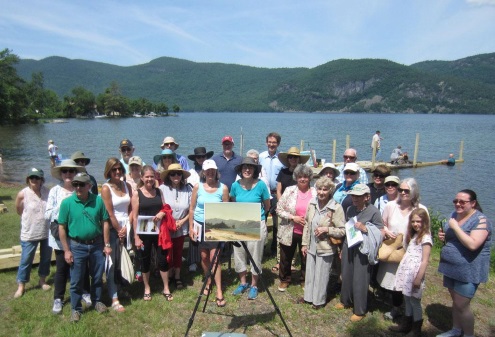
A number of art enthusiasts came to Huletts Landing by boat to find the location that a famous painting was created from.
An art history cruise visited Huletts Landing Monday June 24th, arranged by the Albany Institute of History and Art under the direction of artist Anne Diggory, whose exhibition is at the museum until August 18th.
The group came on shore to view the perspective that David Johnson depicted in two paintings in 1870 and 1874. The 1870 version is in the collection of the museum.

Posing with a reproduction of the painting are Tammis Groft, Executive Director of the Albany Institute of History and Art; Anne Diggory, tour director; and Doug McCombs, the museum’s Chief Curator.

The 1870 version of the painting by David Johnson.
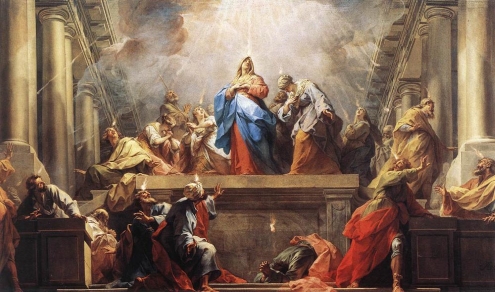
Jean II Restout (1692-1768) (Wikimedia Commons)
ACTS 2:1-11
When the time for Pentecost was fulfilled,
they were all in one place together.
And suddenly there came from the sky
a noise like a strong driving wind,
and it filled the entire house in which they were.
Then there appeared to them tongues as of fire,
which parted and came to rest on each one of them.
And they were all filled with the Holy Spirit
and began to speak in different tongues,
as the Spirit enabled them to proclaim.
Now there were devout Jews from every nation under heaven
staying in Jerusalem.
At this sound, they gathered in a large crowd,
but they were confused
because each one heard them speaking in his own language.
They were astounded, and in amazement they asked,
“Are not all these people who are speaking Galileans?
Then how does each of us hear them in his native language?
We are Parthians, Medes, and Elamites,
inhabitants of Mesopotamia, Judea and Cappadocia,
Pontus and Asia, Phrygia and Pamphylia,
Egypt and the districts of Libya near Cyrene,
as well as travelers from Rome,
both Jews and converts to Judaism, Cretans and Arabs,
yet we hear them speaking in our own tongues
of the mighty acts of God.”

Individuals standing between the Hulett hotel and store around 1948. (Behind the back corner of the Post Office.)
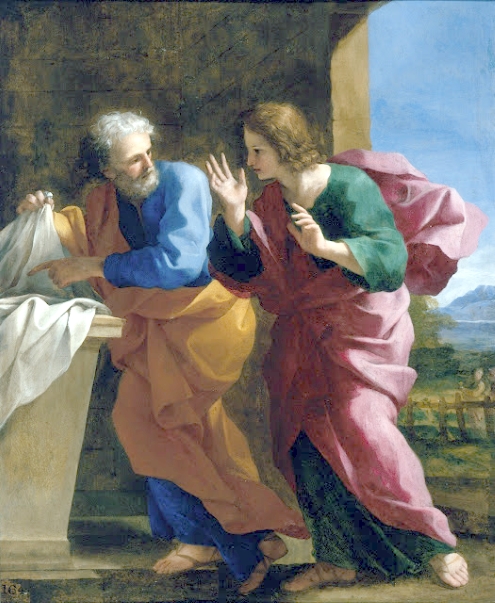
St. John and St. Peter at the empty Tomb
Giovanni Francesco Romanelli
ca. 1640
Oil on silvered copper
Los Angeles County Museum of Art
I hope all of our readers will have a happy and blessed Easter celebration today! I would also like to wish our Jewish readers a belated Passover greeting, as this year both events take place very close to each other.